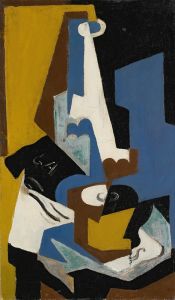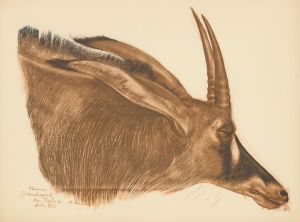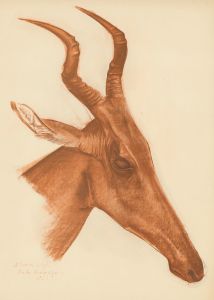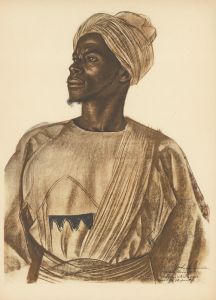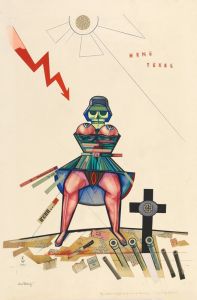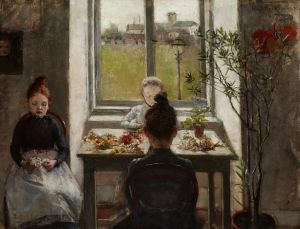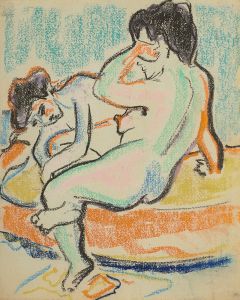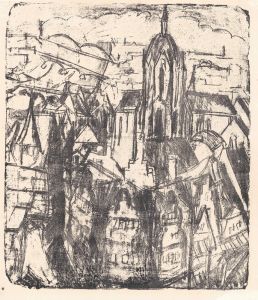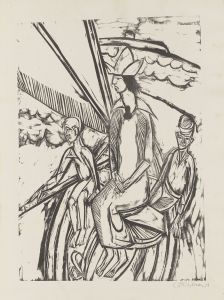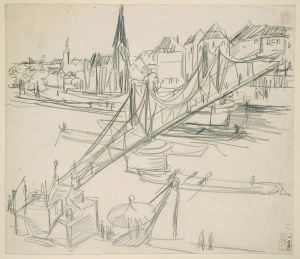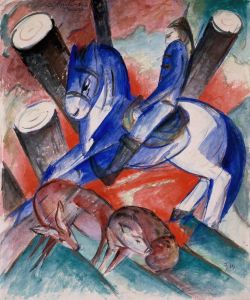
Zwei nackte Mädchen
A hand-painted replica of Ernst Ludwig Kirchner’s masterpiece Zwei nackte Mädchen, meticulously crafted by professional artists to capture the true essence of the original. Each piece is created with museum-quality canvas and rare mineral pigments, carefully painted by experienced artists with delicate brushstrokes and rich, layered colors to perfectly recreate the texture of the original artwork. Unlike machine-printed reproductions, this hand-painted version brings the painting to life, infused with the artist’s emotions and skill in every stroke. Whether for personal collection or home decoration, it instantly elevates the artistic atmosphere of any space.
"Zwei nackte Mädchen" (Two Naked Girls) is a painting by the German expressionist artist Ernst Ludwig Kirchner. Kirchner, born on May 6, 1880, in Aschaffenburg, Germany, was a founding member of the artist group Die Brücke (The Bridge), which played a pivotal role in the development of Expressionism in the early 20th century. The group sought to create a new style of art that was more direct and raw, often characterized by bold colors and dynamic compositions.
"Zwei nackte Mädchen" was created in 1910, during a period when Kirchner and his fellow Die Brücke members were deeply influenced by non-Western art forms, particularly African and Oceanic art. This influence is evident in the simplified forms and the expressive use of color in the painting. The work depicts two nude female figures, a common subject in Kirchner's oeuvre, as he often explored themes of human sexuality and the human form.
The painting is notable for its vibrant color palette and the dynamic interaction between the two figures. Kirchner's use of bold, unmodulated colors and his distinctive brushwork create a sense of immediacy and emotional intensity. The figures are rendered in a somewhat abstract manner, with exaggerated proportions and angular forms, which is characteristic of Kirchner's style during this period.
Kirchner's work often reflected his interest in the psychological and emotional states of his subjects. In "Zwei nackte Mädchen," the poses and expressions of the figures suggest a sense of intimacy and connection, yet there is also an underlying tension that adds complexity to the composition. This duality is a hallmark of Kirchner's work, as he sought to capture the multifaceted nature of human experience.
The painting is also significant for its exploration of the female nude, a subject that Kirchner returned to repeatedly throughout his career. His portrayal of the nude was often controversial, as it challenged traditional representations of the female body and pushed the boundaries of acceptable artistic expression at the time. Kirchner's nudes are not idealized or passive; instead, they are active participants in the composition, exuding a sense of vitality and presence.
"Zwei nackte Mädchen" is housed in the Brücke Museum in Berlin, which holds an extensive collection of works by Kirchner and other members of the Die Brücke group. The museum is dedicated to preserving and promoting the legacy of these pioneering artists, whose work had a profound impact on the development of modern art.
Ernst Ludwig Kirchner's contributions to the art world were significant, but his life was marked by personal struggles. He suffered from mental health issues and addiction, and his work was labeled as "degenerate" by the Nazi regime, leading to the confiscation and destruction of many of his pieces. Despite these challenges, Kirchner's influence on the Expressionist movement and his innovative approach to art continue to be celebrated and studied.
In summary, "Zwei nackte Mädchen" is a quintessential example of Kirchner's expressionist style, showcasing his bold use of color, dynamic composition, and exploration of the human form. The painting remains an important work within the context of early 20th-century art and continues to captivate audiences with its emotional depth and artistic innovation.





